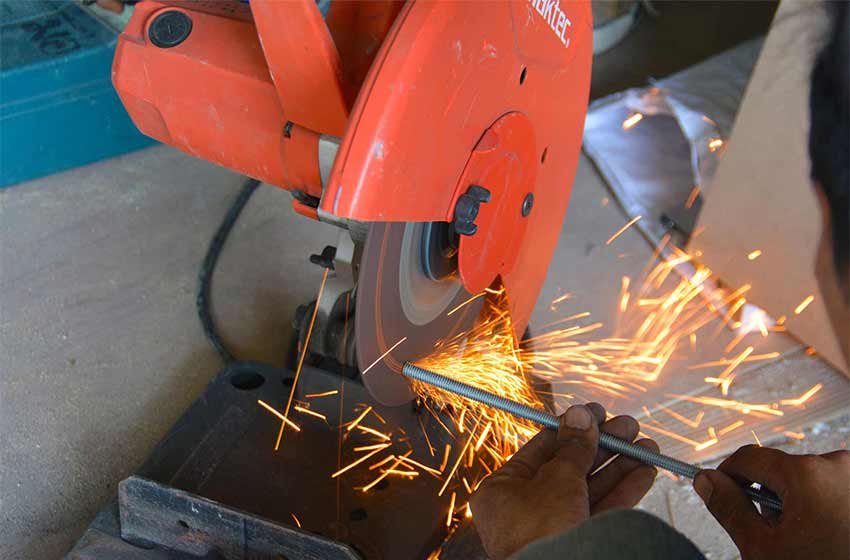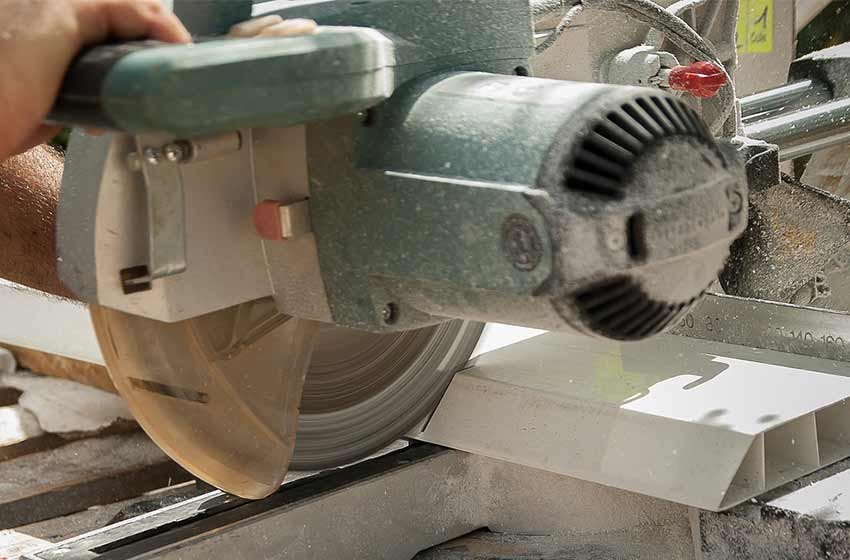How To DIY Your Table Saw Fence
The table saw fence is one of the most underrated parts of a table saw, without a good fence, your cutting would be all over the place as there would be no guide for your work.
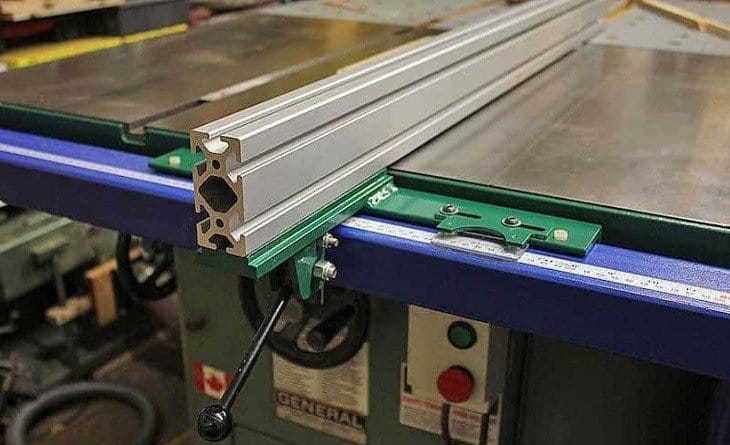
Sometimes, table saws do come with a fence included, however, most of the time this fence isn't durable enough, meaning you might want to make your own or buy a more professional one. Luckily, it is pretty easy to make your table saw fence with a few pieces of equipment such as some aluminium and plywood.
To help you figure out how to make your rip fence and use it, we have a short step by step guide that will guide you through the process.
So without further ado, let's get making that rip fence!
What Is a Table Saw Fence?
The table saw fence as we mentioned above is one of the most important parts of your table saw. This fence acts as a guide for your wood when you make a rip cut and is most commonly used with table saws or circular saws.

When ripping wood with a table saw, long pieces of wood are often used, so the fence which runs parallel to the blade offers additional stability too and holds it in place for accurate cutting.
Why Do I Need a Table Saw Fence
A rip fence not only ensures that your safe by guiding the wood for you but ripping the wood would be impossible without it too, as the fence is what provides stability. Kickbacks are also more likely to occur without a table saw fence as the grain of the wood may be cut at the wrong angle which a fence would prevent, this could seriously damage the user.

We have listed out some further benefits of table saw fences below.
- Can help you measure wood pieces.
- Stops kickbacks.
- Provides accuracy.
- Stops your hands from going near the blade.
How To Make Your Table Saw Fence
Making your own table saw fence is a great way to ensure it is parallel, accurate and most importantly, durable. You should always make sure that your fence is perpendicular to the saw, secure and not flexible, as there will be a lot of pressure when the material is placed in between the fence.
There are a couple of ways to make a DIY table fence, but we are going to go with a method that will make your fence the most professional.
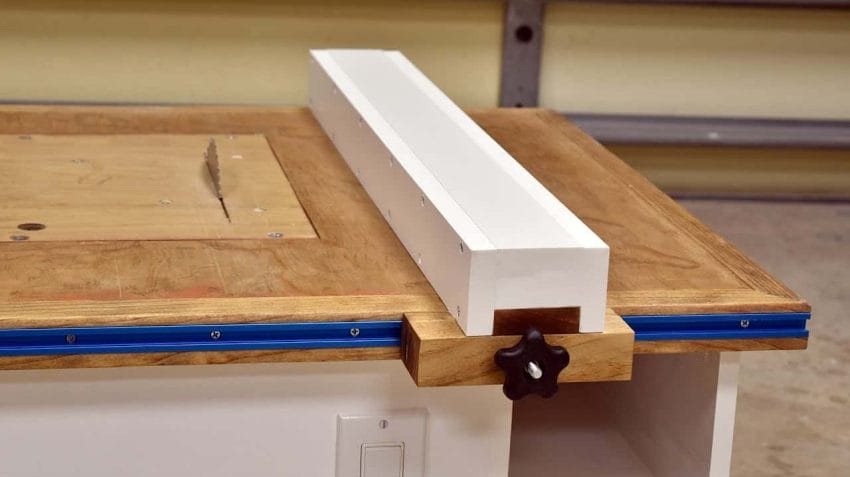
We have listed out the basic tools and steps you will need to make your rip fence below.
Tools Needed
- Rectangular aluminium.
- 50mm wood screws.
- 2x7cm wood board.
- T nuts.
- Carriage bolts.
- 2.5cm x 2.5cm wood boards.
- Plywood.
- Hammer.
- Drill bits.
- Clamp.
Step One - Construct The Aluminum
One of the first steps to making your fence is by constructing the aluminium. Drill 5 holes in your piece of aluminium for screws and put a 9mm groove in the middle by making two passes with a saw for the sliding bolts.

Step Two - Install The Rail
After constructing the aluminium you can install the rail. Look at where the rail needs to be on the tabletop edge with the wooden board, mark the holes too at this stage and predrill some holes for later, you can use your 50mm screws to secure the whole thing.
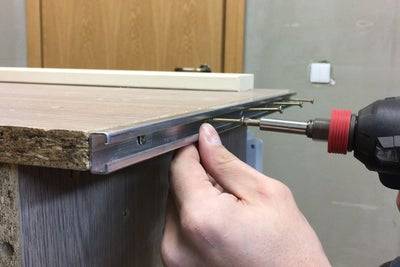
Step Three - Install The Slider Mechanism & Assemble
Now we have constructed the aluminium & installed the rail we can get on to putting in the sliding mechanism and assembling it all. First, take two of your square wood pieces and drill three even holes through them, then take another square wood piece and drill again but leave the centre hole only half drilled.

Put two T nuts in the side holes of this wood with a hammer and use a chisel to take off the excess wood at the back, glue and screw both pieces of wood together.
Step Four - Make Your Sliders
Grab your carriage bolts as you will be using them as sliders and the centre one for stability, you may have to grind the two bolts on either side however to make them fit the rail.

Step Five - Time For The Fence!
Ensure you have your 2x7cm wood board and make sure it fits the dimensions of your table, you can glue on some plywood for more stability too. Align your fence to the blade on your table saw and screw it into place with some glue too for extra durability, this fence is also removable in case you wanted to use your saw for crosscuts.
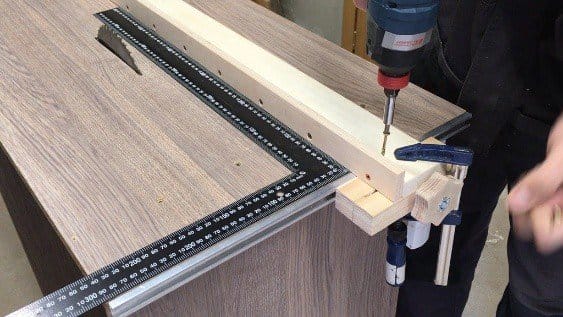
Allow everything to dry then give it a test!
Best Features To Look For In a Table Saw Fence
Even if you have decided to make your table saw fence, it's a good idea to make sure you familiarise yourself with the best features you need to be looking for in one so as you can ensure yours meets professional standards.
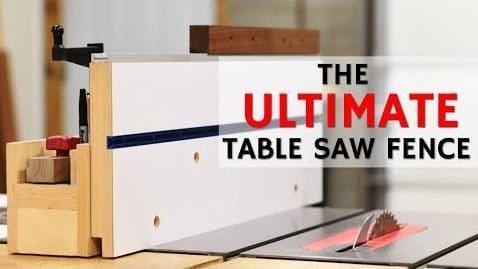
Or in case you would rather buy one, we have listed out the essential features you need to be looking for in the best table saw fence below.
- The capacity - When looking for the right fence or when making your rip fence you need to ensure that it has the right capacity for the type of ripping you will be doing, if you tend to work on more heavy-duty large projects ensure your fence will match this. On average, table saw fences tend to have a capacity between 25-50-inches.
- Weight - You should look for a fence that weighs between 30-50 pounds, too heavy will be harder to slide and too light will be of poor quality.
- Material - Always opt for fences that are made from aluminium or steel, these materials will withhold against pressure and last for longer.
- Connection & adjustability - Rack and pinion attachments result in a more smooth movement from the fence than it does when it's clamped on either side to the table. Also, check how easy and quick it is to adjust.
- Locking - Check whether your fence uses levers or knobs to lock it in place, either one should be suitable.
- Accuracy - Make sure your fence is flat and perpendicular to your blade to ensure accurate cuts, a diagonal or off centre angle will be replicated in your cut.
Should I Buy a Professional Rip Fence?
If you are after a more high-quality rip fence for professional work, they will benefit you with extra durability and accuracy than when compared to a homemade DIY fence, however, they can put you back about £200-£250 if you get a very high-quality one.

You should go for a professional rip fence if you do heavy-duty ripping often and need your cuts to be of high accuracy.
Frequently Asked Questions About Making Your Table Saw Fence
What's the difference between a mitre gauge and a rip fence?
Rip fences are only good for rip cutting, mitre gauges on the other hand can be used for different types of cuts such as squares or angles, a table saw typically comes with both a rip fence and a mitre gauge.
Are rip fences only for a table saw?
No, rip fences can be used with circular saws too so as they can be utilised as a cutting guide for better accuracy.
Why is it important to have a table saw fence?
Table saw fences provide stability and accuracy to your woodwork, they also help with safety by reducing the chances of a kickback happening from the saw, you should never operate a table saw without a fence as cutting the wood at the wrong angle against the grain could be very dangerous.
Final Words
To conclude, making your table saw fence can be done in a variety of ways, whether you use aluminium or plywood, just ensure you measure your fence first according to your table saw and make it as durable as possible. If you're looking at buying a more professional fence in the future, always check it has the right capacity, it's made of high-quality material and is easy to adjust.








